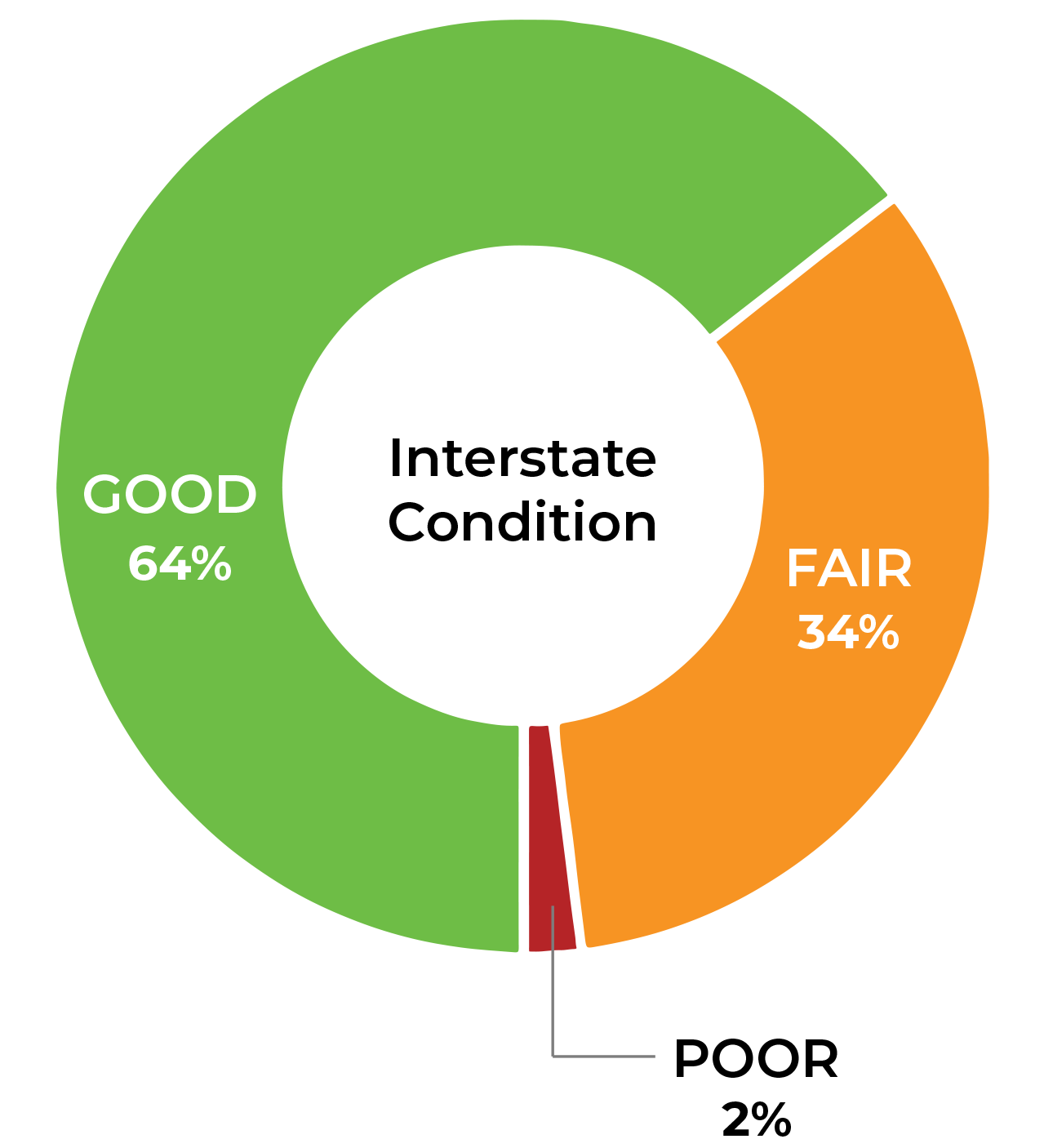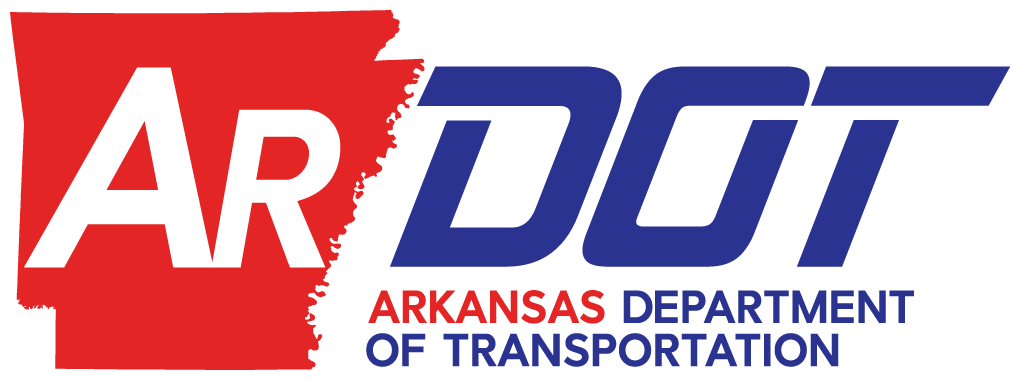The majority of ARDOT’s budget goes toward preserving existing infrastructure.

Good – Fairly new to brand new pavement. No major distresses. Possibly some minor distresses, with a smooth ride.
Fair – Minor to moderate cracking, potholes, and patches are present. Potholes are starting to form, and the ride quality is relatively smooth.
Poor – Increased quantity of cracking, potholes, and patches are present. Potholes are growing larger in size, and the ride quality is rough.
For more information, please refer to the Distress Identification Manual published by the Federal Highway Administration.
Total Interstate Centerline Mileage: 768
The vast majority (98%) of Interstates in Arkansas are rated to be in either “Good” or “Fair” condition. See under the Graphs tab for additional information on the pavement rating system. Currently 2% have a “Poor” rating.
ARDOT uses state-of-the-art technology to collect pavement inventory and condition data. Specially equipped vehicles use automated technology to capture video data of the road network at highway speeds, and at the same time measure key indicators of pavement condition, such as roughness, rutting, and cracking.
ARDOT has made enhancements to its data collection approach to leverage new technology while complying with changes in standards of data collection. In 2017, ARDOT implemented three-dimensional imaging for pavement cracking. This newer technology improves the detection of cracks, particularly on wet pavement, and captures the depth of the crack, which enhances data accuracy.
Reports show that delaying needed work on pavement can result in degraded pavement condition, more significant treatments, higher costs, and a reduction in Level of Service (LOS). In addition, the report identifies lower condition ratings and LOS as factors that contribute to user discomfort, exposure to crashes, and increased fuel usage.
Insufficient funding is the most common cause for delayed maintenance or preservation activities.
In Arkansas, pavement work represents the single largest investment of public dollars in existing transportation assets. Keeping pavements in good condition lengthens their useful life, enhances safety, minimizes user operating costs, and reduces vehicle emissions. Rough roads not only increase wear and tear on vehicles but can, in some cases, also reduce mobility.
